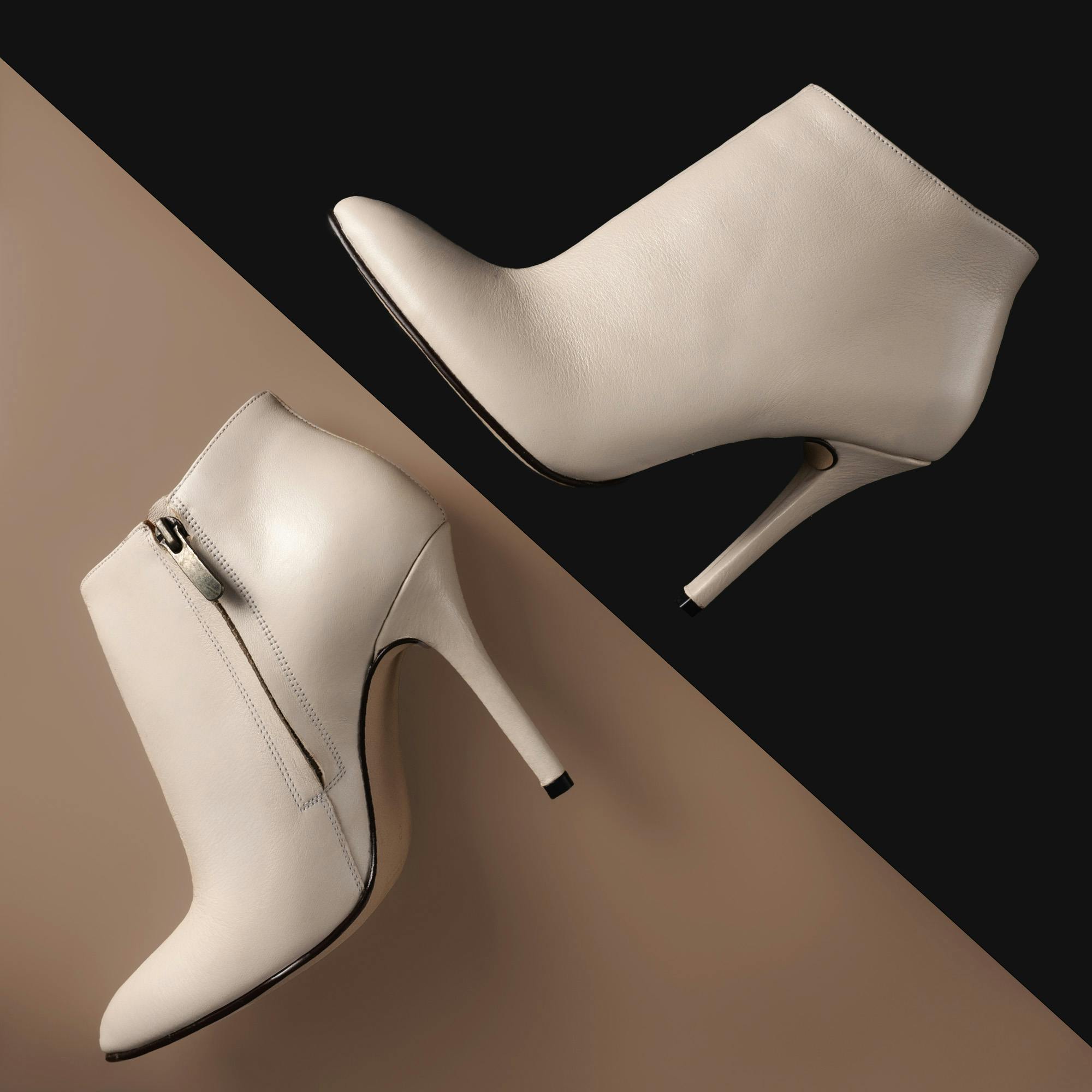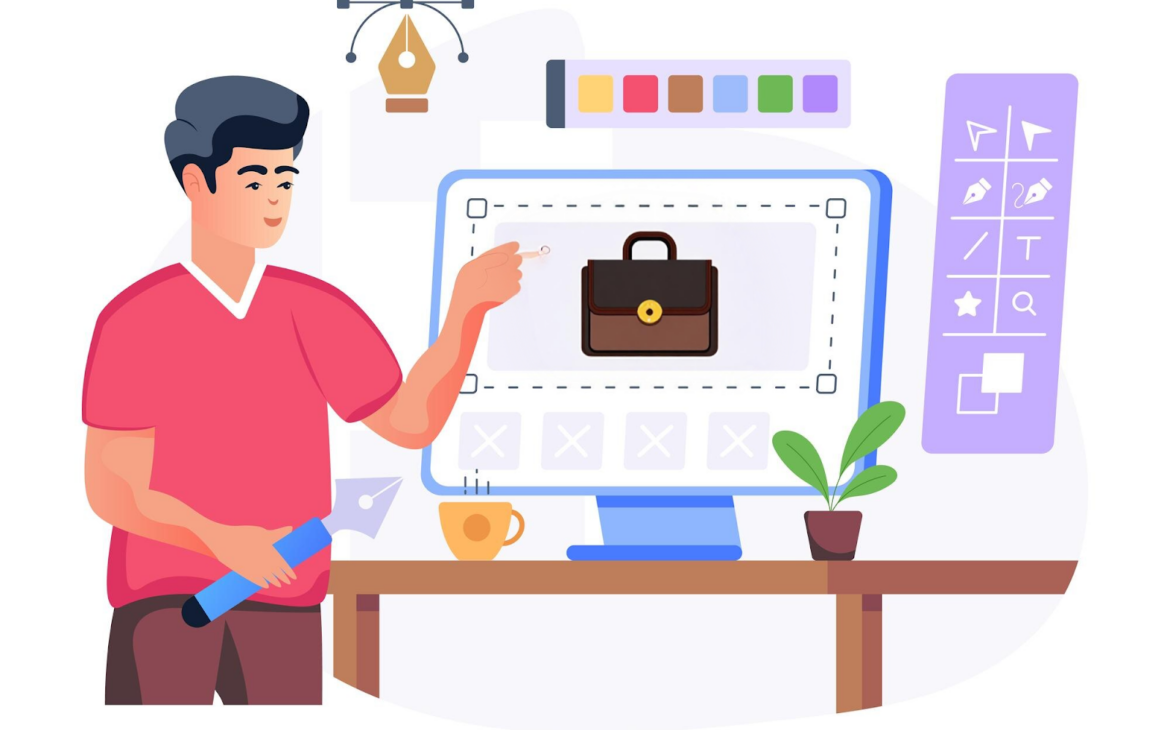In eCommerce, product images do more than showcase items—they drive customer decisions. Yet, many retailers overlook a crucial factor: image size. Poorly optimized images can lead to slow-loading pages, distorted visuals, and lower search rankings, all of which hurt sales and visibility in search results.
This blog tackles these challenges by guiding you through optimal eCommerce image sizes, the best formats, mobile vs desktop considerations, and practical tips for balancing quality with speed. We’ll also share top optimization tools to help you create a fast, visually appealing, high-ranking online store. Let’s dive in!
What is the Best Image Size for eCommerce Product Listing?
The best image size for eCommerce product listing depends on their intended use.
- Small images: 100×200 or 200×200 pixels, typically used for thumbnail images, category pages, or smaller product listings.
- Medium-sized images: 640×640 or 800×800 pixels, ideal for product pages, providing a clear view of the product without taking up too much space.
- Large, zoomed-in images: 800×800 or 1000×1000 pixels, best for detailed product views, zoom functionality, or showing textures and intricate features in close-up.
Are Image Size and Resolution Important for eCommerce Success?
In eCommerce, understanding image size and resolution is key to displaying products effectively. Image size refers to an image’s dimensions (width and height in pixels) or file size (KB or MB), influencing how large it appears on a website. Meanwhile, resolution—measured in PPI (Pixels Per Inch)—determines the image’s clarity. A well-optimized image balances both factors, ensuring products look sharp without slowing down website performance.
A high-resolution image contains more pixels, making it crisp and detailed—crucial for showcasing product textures and features. On the other hand, low-resolution images appear pixelated and fail to engage shoppers. For eCommerce success, selecting the right image size and resolution ensures a visually appealing storefront that enhances user experience and drives conversions.
Types of eCommerce Product Images

Alt Text: Product photgraphy of boots on a contrasting background
To create an engaging and seamless shopping experience, eCommerce stores utilize various types of product images. These range from thumbnails for quick browsing to medium-sized images on product pages, zoomable high-resolution images for detailed views, and even 360-degree images for an interactive experience. The right mix of types of images can enhance user engagement, improve product understanding, and ultimately boost conversion rates.
Thumbnail Images
Thumbnails are small, compressed images that offer a quick preview of products without slowing down page speed. Typically 100×200 or 200×200 pixels are commonly used in product listings and catalogs. While minimal in size, they highlight key product features like shape, color, and design, guiding users to the product page for a more detailed view.
Medium-Sized Images
Displayed on product pages, medium-sized images (640×640 or 800×800 pixels) provide a clearer view of products from different angles—front, side, and bottom. These images strike the right balance between quality and performance, offering enough detail to inform purchasing decisions without affecting page load speed.
Zoomable High-Resolution Images
For products requiring a closer look—such as jewelry, fabrics, or electronics—zoomable high-resolution images(800×800 or 1000×1000 pixels) allow shoppers to inspect intricate details, textures, and patterns. These banner images mimic an in-store experience, enhancing trust and increasing purchase confidence, particularly for high-end or detail-oriented products.
Best Image Formats for eCommerce Websites

Alt Text: Product photography of perfume bottles on a grey background
The image format you choose is crucial in balancing quality and file size. The correct format helps maintain image detail while optimizing performance. Common formats include:
- JPEG: Ideal for high-quality images with smaller file sizes, making it a popular choice for product photos.
- PNG: Best for images requiring transparent background, such as logos or icons.
- WebP: A modern format offering superior compression and quality, though it’s not universally supported across all browsers.
Desktop vs Mobile Image Size Recommendations
With mobile shopping on the rise, optimizing images for both desktop and mobile is essential for an ideal user experience. Desktops can handle large, high-resolution images while adhering to image size guidelines, while mobile devices require resized images that adapt to varying screen resolutions. Following the recommended Best image sizes for both platforms can enhance engagement and deliver a seamless shopping experience across devices.
Adapting to Screen Resolutions
Images must adjust to different sizes for different screens without sacrificing quality. High-resolution images look great on larger screens, while scaled-down versions maintain clarity on smaller devices. Responsive design ensures images automatically resize to fit the screen, providing a consistent experience on all devices.
Optimizing for Mobile Devices
Mobile optimization is critical in today’s digital landscape, for improved user experience. Square images(1:1) and vertical images (2:3, 3:4) work best on mobile screens, while file size matters more on mobile due to slower networks. Using image optimization tools and formats like WebP ensures high-quality images with smaller file sizes, improving load times on mobile devices.
Common Image Issues on eCommerce Sites With Solutions
eCommerce sites often face image-related issues that can impact performance and user experience, such as product image sizes that are not the correct size, slow loading times, poor quality, or images not displaying at all. Below, we’ll discuss these common problems and offer practical solutions to ensure your product images enhance the shopping experience.
Incorrect Image Sizes
Solution: Adhere to recommended dimensions for different types of product images (e.g., thumbnails, zoomable images, etc.) to ensure optimal display.
Slow Loading Times Due to Large Images
Solution: Compress large image files using optimization tools like TinyPNG or Compressor.io to improve page load speed without sacrificing quality.
Poor Image Quality
Solution: Adjust compression settings to strike a balance between quality and file size, ensuring clear and sharp product images.
Images Not Displaying
Solution: Verify image URLs to ensure they’re correctly linked and accessible on your site, preventing broken image links.
By addressing these issues, eCommerce sites can enhance performance and deliver a seamless, user-friendly shopping experience.
Best Practices for eCommerce Product Images

Alt Text: Overhead shot of a bottle on green leaves
Following best practices for eCommerce product images improves user experience, builds credibility, and boosts conversions. In this section, we’ll discuss key practices like consistency, using multiple angles, and image SEO to optimize your product images.
Consistency is Key
Maintaining uniformity in style, size, viewpoint, and lighting across all product images ensures a professional, cohesive appearance. This helps improve user experience and builds trust with potential customers.
- Style & Angle: Keep product angles and styles consistent for easy comparison.
- Size: Use uniform image sizes for a clean, organized design.
- Lighting & Background: Consistent lighting and backgrounds enhance product features and create a polished look.
Show Multiple Angles
Offering multiple images from different angles allows customers to understand the product better, enhancing the overall customer experience and mimicking a real-world shopping experience. Close-ups and lifestyle shots further highlight key features, building trust and encouraging purchases.
High-Quality Close-Ups
For products with intricate details or textures, provide high-quality close-up shots. This gives shoppers a better sense of product quality, especially for premium items or those with unique features.
Image SEO
Optimize image file names, alt text, and captions for better search engine visibility. Well-optimized images help drive organic traffic and improve site rankings.
Also Read: Stay Ahead With These Product Photography Trends in 2025
Image Optimization Tools
Image optimizers are essential for balancing quality and file size, ensuring fast-loading, high-quality visuals across devices. Below, we’ll discuss tools like Compressor.io, TinyPNG, ShortPixel, and ImageOptim, which provide quick and effective ways to resize, compress, and reformat images without sacrificing clarity. These solutions enhance site speed, improve user experience, and boost SEO by ensuring images load seamlessly on all screen sizes.
Compressor.io
Compressor.io significantly reduces image file sizes—up to 90%—while maintaining high quality. Supporting formats like JPEG, PNG, GIF, and SVG, it’s an excellent tool for web admins looking to optimize images for performance and faster load times.
TinyPNG
TinyPNG efficiently compresses PNG and JPEG files with minimal quality loss. It also offers bulk image optimization and a WordPress plugin for automatic compression during uploads, making it ideal for eCommerce product pages handling large volumes of images.
ShortPixel
ShortPixel is a versatile image optimization tool offering online and plugin-based compression. It supports WebP conversion for smaller file sizes and better performance, making it an excellent choice for eCommerce sites aiming to optimize images for faster load times and improved SEO.
ImageOptim
ImageOptim is perfect for Mac users, providing lossless compression that reduces file sizes without compromising image quality. It supports various formats and is ideal for web admins who must compress images on the desktop before uploading them to their site.
Elevate Your eCommerce Product Images with FlixStudio
In eCommerce, first impressions matter—and outdated, unoptimized images can cost you sales. FlixStudio helps you stay ahead with trend-driven, high-quality product visuals designed to captivate shoppers and boost conversions. From AI-powered enhancements to seamless resizing and background removal, we take care of every detail, ensuring your products look stunning across all devices. Partner with FlixStudio and showcase your products at their best!
Conclusion
Optimizing eCommerce image size can transform an ordinary store into a visually compelling, high-converting shopping experience. Striking the right balance between size, resolution, and quality improves user experience, page speed, and search engine visibility across devices.
With the proper knowledge, you can cut unnecessary bytes, improve load times, and meet platform requirements without sacrificing quality. Image optimisation becomes effortless by choosing optimal formats, leveraging powerful compression tools, and following best practices. Investing in high-quality, optimized images is an investment in better UX, stronger SEO, and higher sales—so make every pixel count!
Frequently Asked Questions
How does image size affect SEO?
The size of an image directly affects the website’s loading speed, which is an essential factor in Google’s SEO ranking. Smaller image sizes load quicker, enhancing web page performance, delivering a better user experience, and consequentlyboosting the website’s search engine ranking.
What is the difference between image size and resolution?
Image size refers to an image’s dimensions or the physical width and height (measured in pixels) or the image file size (in KB or MB). On the other hand, image resolution contains the details or clarity of an image, often expressed in PPI (Pixels Per Inch).
Which image format is best for eCommerce websites?
The preferred image format depends on the specific requirements. JPEG is generally the go-to format for high-quality images with small file sizes. PNG is a good choice for images requiring transparency, and WebP offers superior image quality with efficient compression but isn’t universally supported by all browsers.
How can I optimize images for ecommerce websites without losing quality?
To optimize images for eCommerce without losing quality, use compressed image formats like WebP or JPEG 2000 and tools like TinyPNG or ImageOptim to reduce large file sizes while maintaining clarity. Additionally, implement responsive image scaling, proper image dimensions, and lazy loading to enhance page speed without compromising visual appeal.



